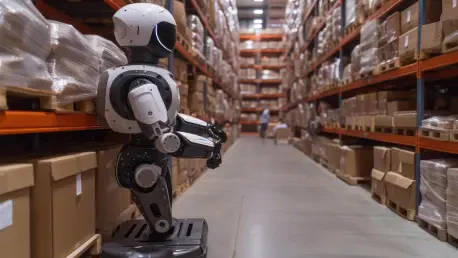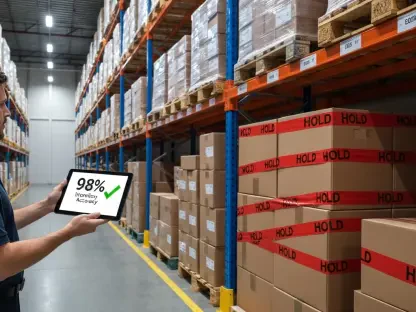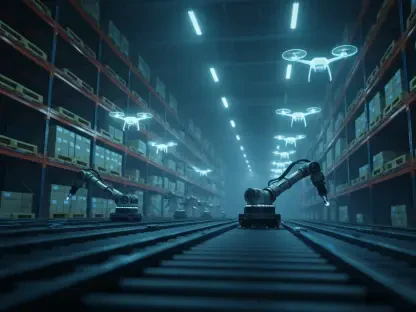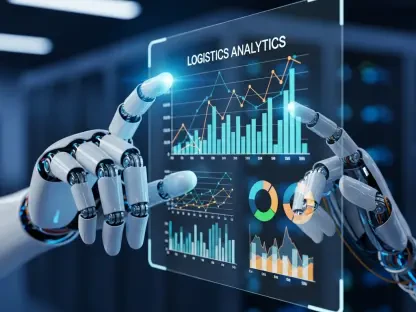Amidst unprecedented technological advancements, Automate 2025 unfolds, heralding a new era for robotics and automation. Industry professionals and experts converge at this event to reflect on its potential impact in reshaping manufacturing and logistics. This roundup article gathers diverse opinions, exploring key trends, challenges, and strategies pivotal in driving the future of automation technology.
Contextualizing the Rise of Automation and Robotics
The advent of automation and robotics technologies has profoundly influenced industrial sectors, from manufacturing to logistics. Robust integration of AI and machine learning revolutionizes operational efficiencies and triggers a fundamental shift in workforce dynamics, according to industry observers. Some experts highlight that collaboration among automated systems reshapes productivity, enabling streamlined operations across various sectors. Others underscore that improved connectivity through IoT solutions fosters robust ecosystems that accelerate technological growth and adoption.
Automate 2025 epitomizes the evolution of automation, featuring groundbreaking innovations that redefine industry standards. Experts emphasize the event’s role in showcasing cutting-edge technologies while facilitating discussions on strategic developments. Many agree that the exhibition fuels momentum toward transformative innovations, ensuring sustained progress within the robotics sphere.
Insights from Industry Leaders and Innovations on Display
Industry leaders from diverse sectors reflect on showcasing innovative solutions at Automate 2025, presenting technologies that promise transformative impacts. Innovations range from human-like robots to advanced AI algorithms optimizing logistics, creating significant interest among participants. Many leaders see this as a glimpse into the possibilities that await industries as they adopt these technologies.
Experts convey insights on data-driven approaches that shape future strategies. Recognizing the importance of data analytics, they note its role in navigating complex automation landscapes. Challenges identified include ensuring data security and developing robust infrastructures. The complexity of integrating multifaceted systems into existing operations requires strategic planning and adaptation.
Navigating these complexities involves addressing hurdles such as regulatory frameworks and technological disparities. Some analysts emphasize the importance of overcoming these obstacles, suggesting comprehensive strategies that promote seamless integration. Solutions, such as policy advancements and enhanced cybersecurity measures, are pivotal in overcoming challenges and fostering growth.
Market Integration and Industry Evolution
Automate 2025 facilitates a dialogue on integrating emerging technologies into real-world applications, revealing tangible impacts across industries. Case studies presented highlight successes in sectors like supply chain management, demonstrating efficiency gains through robotics integration. Attendees recognize these evolutions as precursors to widespread automation adoption, propelling industries toward enhanced competitive performance.
Opportunities associated with automation are substantial, yet risks persist. Experts denote the importance of navigating a competitive marketplace with strategic foresight. Discussions centered on balancing workforce changes with technology adoption offer insights into aligning operational objectives with innovation.
Emerging Trends and Global Perspectives
The presence of disruptive trends within robotics and automation sparks significant discourse. Notable among these are advances in AI, prompting a rethinking of traditional processes. Analysts identify regional dynamics impacting innovation, noting that geographical disparities influence technological adaptation and progress.
Myths associated with automation often hinder advancements, yet comprehensive analyses help debunk misconceptions. Experts advocate for informed dialogues spanning across sectors, facilitating a deeper understanding of automated futures. By dispelling myths, industries might leverage new insights to drive strategic transformations.
Strategic Collaborations and Expert Predictions
Automate 2025 highlights collaborative efforts that transcend competitive boundaries. Experts discuss partnerships aimed at advancing technological innovations, emphasizing that strategic alliances enable exploratory pursuits beyond traditional limitations. Predictions from industry analysts project growth trajectories fueled by data-driven initiatives, underscoring potential expansion avenues.
Comparative analyses provided anticipate future directions, suggesting pathways toward sustained innovation and excellence. Insights touch upon emerging technologies and market trends, significantly influencing strategies and shaping prospects within the automation sector.
Key Learnings and Strategic Pathways
Experts share key learnings, identifying insights vital in propelling industries forward. Recommendations from Automate 2025 offer stakeholders strategic pathways, focusing on harnessing automation advancements for enhanced productivity. Attendees note practical applications guiding transformative shifts, leveraging newfound knowledge to foster tangible operational changes.
Reaffirming the Future Potential of Robotics and Automation
Automate 2025 highlights the science behind immense potential embedded in robotics and automation. As experts recount lessons learned, they reaffirm the ongoing relevance of these technologies, echoing industry calls for embracing innovation. Concluding thoughts pivot toward inspiring strategic actions, encouraging stakeholders to leverage insights gained for sustained progress within this dynamic field.









